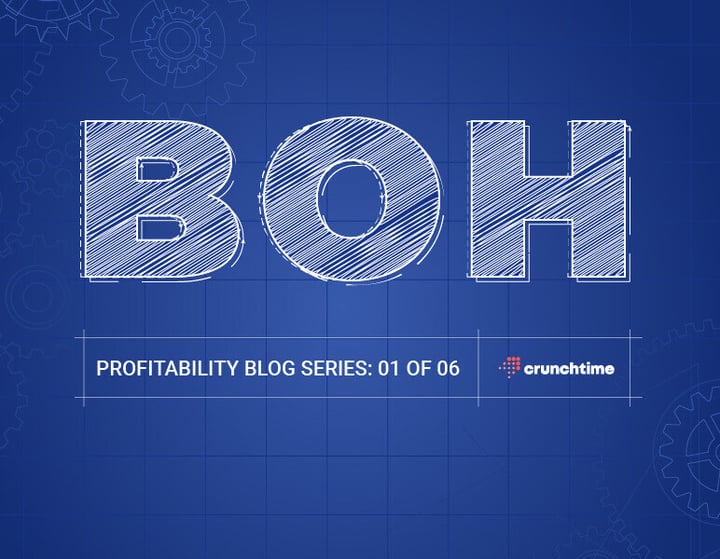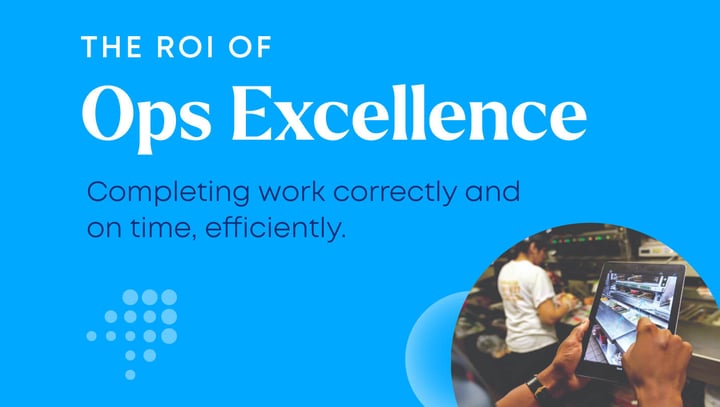Digitizing your daily operations and checklists comes with a big perk: You get data. But that data is just a starting point. Without the right data, you won’t get the insights you need to drive better work, improve accountability, and ultimately get better results from every store.
Wondering how to get more out of your data? Start with these three tips from top restaurant operators at Shake Shack, JRI Hospitality, and Tacala.
1. Get laser-focused on what data matters–and make sure your system captures it.
Think of your organization’s goals. Do you want better store accountability? Higher guest satisfaction? Higher food safety standards? Use your goals as your North Star to identify what data is critical for you. Then make sure your checklists are set up to get you that information.
For example, Shake Shack wanted to drive accountability in their stores, so they needed accurate data on their checklists’ completion rates. At the time, their operations execution platform only gave them one-size-fits-all forms. Stores with nonstandard hours consistently dragged down the overall completion rates. So, Shake Shack switched their operations execution platform to
Zenput by Crunchtime, which enabled the brand to customize their checklists and dramatically improve their reporting accuracy.
This change created “better data points so we can have more reliable data that we can use to drive food safety culture and accountability,” says Anthony Pugliese, Food Safety Manager at Shake Shack.
2. Use data to drive accountability, not just reporting.
Top operators design their forms to capture data on how stores are holding themselves accountable. When something goes wrong at the store level, they ask store managers: How do you plan to fix this?
“Now we have data on not just that your dish machine isn’t working,” said Pugliese. “Now we have the data on what you are actually going to do to correct it.” Shake Shack then uses the data to see if the store is doing what they agreed to do.
JRI Hospitality uses the same approach at its stores. If a store fails the weekly “Code Red” – a report that tracks key store metrics each week—its operations platform triggers a follow-up checklist that asks the store to outline how it plans to improve next week. The company uses that answer to track through data how the store is meeting its stated goals.
3. Consolidate your operations data for better insights.
Your operations execution data shouldn’t live in a silo. Find ways to integrate it with the other data your business looks at regularly.
JRI pulls their data on task completion, task integrity, and submission into a business intelligence tool alongside other regular reporting. This helps add more depth to their overall KPIs.
“It’s critical for us to be able to have everything in one place,” says Bo Fairbank, Director of Business Intelligence at JRI Hospitality.
At Tacala, they compare store data against all other Taco Bell franchisees to better understand and fine-tune their performance.
“We're doing really well compared to the overall company throughout all of Taco Bell,” says Ken Guardino-Lucatero, Ops Service Director at Tacala, a Taco Bell franchisee. “71% of our locations are four stars or better. Whereas, as a company, all over 8,000 Taco Bells is 68.”
The right data can drive your business forward
“If you’re not using your digital checklist data, you might as well just have paper checklists,” Pugliese said.
If you’re serious about improving operations, data can’t just be a checkbox. It needs to be purposeful, proactive, and integrated.
Ready to unlock real results from your operations data? See how the
Zenput by Crunchtime platform has helped brands like Shake Shack, JRI Hospitality, and Tacala transform their operations.





